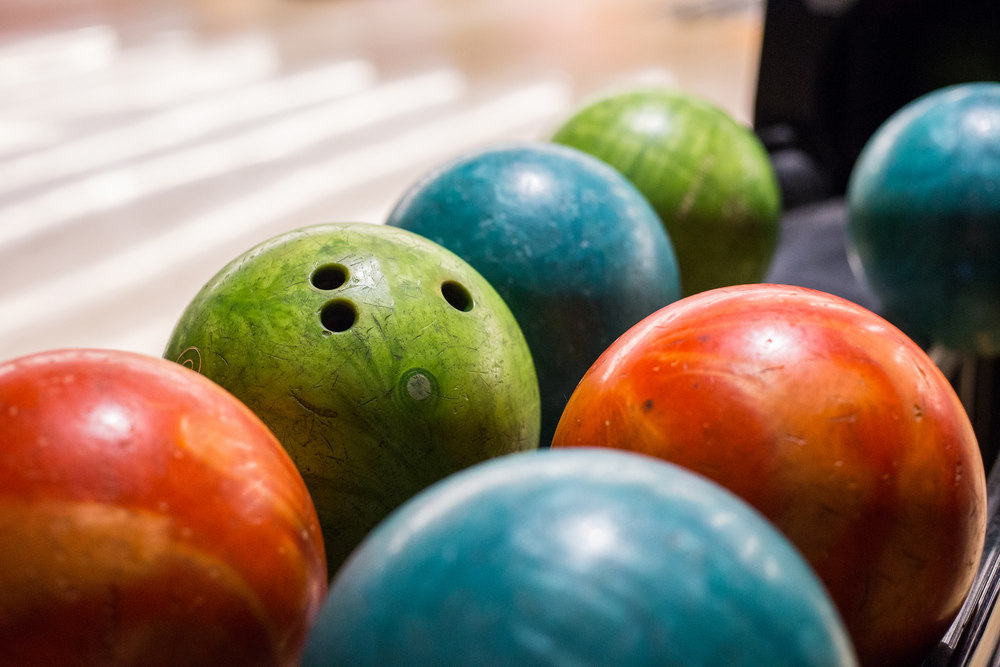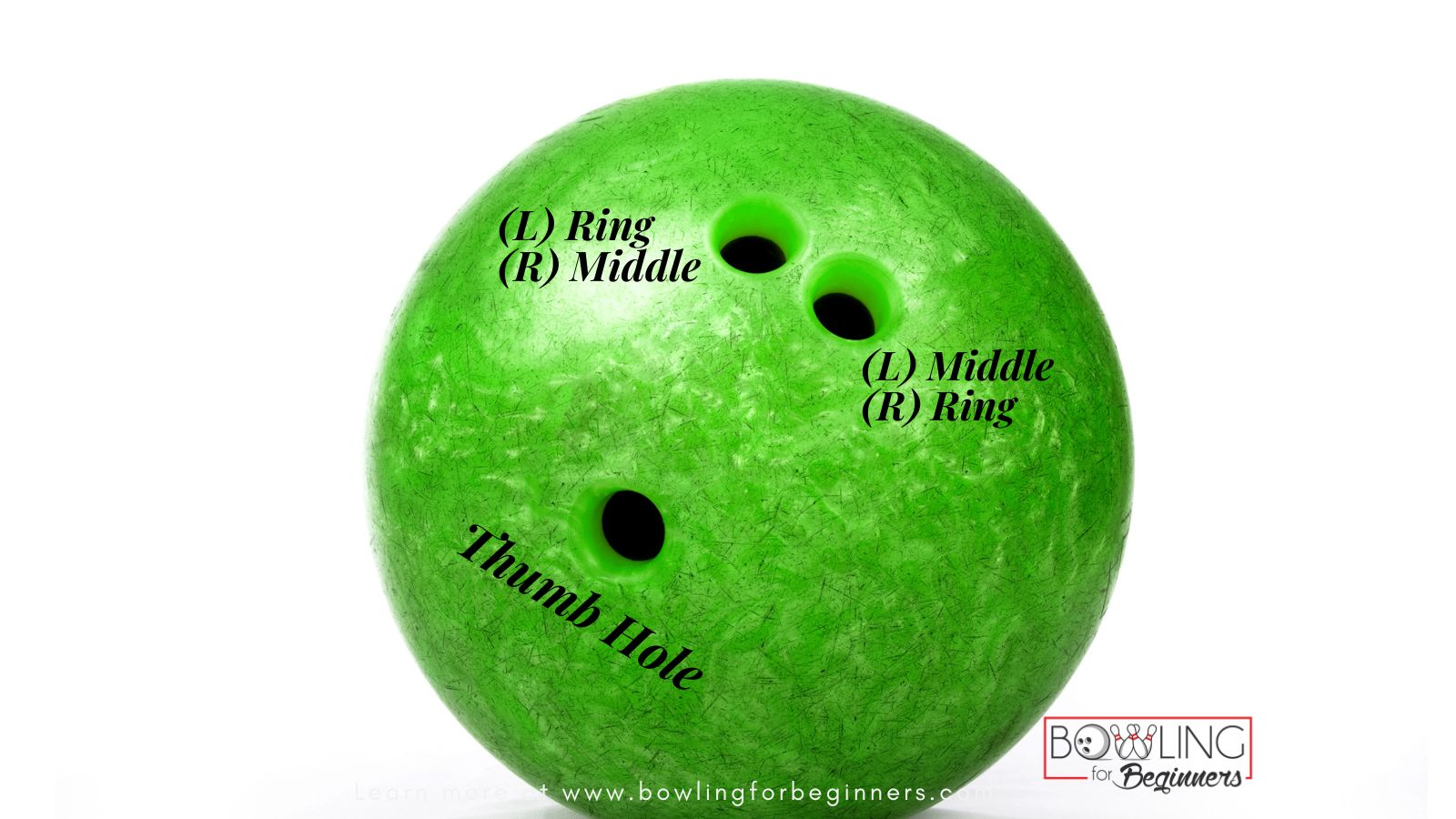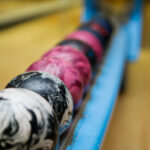
When you think of a standard bowling ball, chances are you imagine a standard bowling ball with three holes. It’s what we all see when we go to the bowling alley or watch bowling in the media. But did you know that bowling balls can have more than three holes or even no holes at all? In this article, we’ll share with you how many holes a bowling ball has: we’ll look at professional standards, balance holes, the unique ball altering choices of pro bowlers, and more.
Contents
- 1 How Many Holes Does a Bowling Ball Have?
- 2 Some Bowling Balls Have Balance Holes
- 3 Why Do Some Bowling Balls Have 2 Holes?
- 4 Do Pro Bowlers Use All Three Basic Bowling Ball Holes?
- 5 Bowling Balls Don't Always Come with Holes
- 6 Can You Use a Bowling Ball Without Holes?
- 7 Experiment With Your Grip For the Best Results
- 8 Frequently Asked Questions
How Many Holes Does a Bowling Ball Have?
In a ten pin bowling game, the number of holes in a bowling ball primarily depends on the player's grip style and comfort. Traditionally, a bowling ball has three holes: one for the thumb, one for the ring finger, and one for the middle finger. Most people use all three of these holes, while others prefer using just two. The number of holes you use during your throws will depend on your personal preferences.

Some Bowling Balls Have Balance Holes
In the world of bowling, balance holes, also known as weight hole(s) or the fourth hole, has been used historically to adjust the bowling ball's mass distribution. These holes aren't for gripping; instead, they serve to fine-tune the ball's performance, manipulating its spinning motion or hook potential. Balance holes can give players an edge by providing more control over the ball's movement in the lane.
However, it's worth noting that the United States Bowling Congress (USBC), the governing body for the sport of bowling, revised its rules in 2020, no more weight holes, banning the use of balance holes in USBC certified competition. This decision was aimed at maintaining fairness in the sport, ensuring that a player's skill rather than the ball's engineering determined performance.
Bowling Balls Can Have Up to 5 Holes Per the USBC
According to the USBC, a bowling ball can have up to 5 holes. But things aren’t that cut and dry. Here are the most pertinent pieces of information governing bowling balls’ holes for USBC-sanctioned competitions:
Static Weight. From August 1, 2018, if your bowling ball weighs more than 10 pounds, it could have a bit more weight on one side than the other - up to 3 ounces more on the side, top, bottom, or around the thumb or finger holes. The catch is, this rule only applies if your ball doesn't have a balance hole.
Balance Hole(s). A balance hole is an extra hole in a bowling ball that isn't used for gripping but can help the ball roll more to your liking. But, starting from August 1, 2020, you're not allowed to have a balance hole in your ball at all.
Gripping Hole(s). Also, starting from August 1, 2020, you can drill up to five holes in your ball for gripping (sticking your fingers or thumb in when you bowl). You have to use all of these holes each time you bowl. If you choose not to use a thumb hole, you need to mark the spot on your ball where the center of your palm goes.
Special Rules for House Balls. House balls are balls that are provided by the bowling center for anyone to use. The USBC made a special rule for these balls, saying that people using these balls don't have to use all the gripping holes if they can't or don't want to.
Why Do Some Bowling Balls Have 2 Holes?
Not all bowling balls have three holes at a minimum. Some, especially those used by professionals, might only have two. This is ideal for bowlers who use a thumbless grip where the middle and ring fingers are in the two holes, and the thumb remains outside the ball. This grip allows for increased rotation and a higher hook potential, often giving bowlers an edge over traditional three-fingered techniques. However, it's a style that requires a ton of practice, as controlling the ball without thumb support can lead to unexpected results on the lane.

Do Pro Bowlers Use All Three Basic Bowling Ball Holes?
While the classic three finger-hole configuration is the norm, professional bowlers do not always use all three bowling ball holes. Many prefer the three-finger grip, while others choose not to have a thumb hole.
In the end, the choice is personal and strategic, based on what feels most comfortable and gets you the best results on the lane. A grip that works for one bowler in lane conditions might not be suitable for another.
Bowling Balls Don't Always Come with Holes
One important fact that surprises many is that bowling balls don't always come with holes. When you purchase a high-quality bowling ball, it often comes 'undrilled.' This allows the player to customize the ball's holes according to their hand size and grip style. Professional bowlers frequently choose this route, ensuring the ball fits their hand perfectly and meshes well with their unique bowling technique.
Custom drilling services are available in most pro shops, where an expert can measure and drill gripping holes in the ball accordingly. The exact placement, angle, and size of the holes can significantly affect a bowler's performance, so it's crucial to get this step right.
Can You Use a Bowling Ball Without Holes?
In theory, you could attempt to use a bowling ball without holes, but it would likely be much more difficult and less accurate than using one with holes.
Using a bowling ball without holes would require you to palm the ball, which could compromise your grip and control, making it more challenging to achieve accuracy and power. Moreover, the weight of a typical bowling ball could be difficult to support without using the holes.
Still, you can choose to bowl with a ball or a holeless bowling ball if you want to.
Note on comfort: If you're thinking about bowling without holes due to discomfort or improper fit, it's usually best to work with a pro shop to have a ball drilled to your hand's specifications. This can provide a more comfortable, secure grip and better control over the ball. Most often, people find that using at least 2 bowling ball holes is most advantageous.
Experiment With Your Grip For the Best Results
It's crucial to understand that the most effective grip type can vary from bowler to bowler. You may find success with a traditional three-hole grip, where two fingers and a thumb are placed in the ball's three holes, or you might excel with a thumbless grip, a fingertip grip, or a semi-fingertip grip. These alternative grips offer varying degrees of control and power. Don't be afraid to try out various methods to find the one that best suits your style and comfort.
While experimenting, consider the size and weight of the ball too. Each can significantly impact how comfortable a grip feels and how much control you have when releasing the ball. For instance, fingertip inserts only allow entry up the first knuckle of both fingers and the thumb. While the traditional grip allow entry up to the second knuckle
The world of bowling is more intricate than it first appears, with the number of holes in a bowling ball being just one aspect of this fascinating sport. The versatility in bowling ball hole configuration allows players to fine-tune their game, making it not just about power, but also about strategy, precision, and personal comfort.
Frequently Asked Questions
How many holes does a professional bowling ball have?

Typically 2
Professional bowlers typically bowl with two fingers and not their thumb for greater hook. The USBC states 12 holes are allowed in every ten pin bowling ball. It really depends on the professional bowlers' style of bowling.
What are the holes in bowling balls called?

1. Gripping holes
2. Vent holes
3. Balance holes
4. Mill pit or hole
The governing body of bowling (USBC) states bowling balls are allowed to have 12 holes drilled into the ball. There can be 5 grip holes, 5 vent holes, 1 balance hole, and 1 mil.
Do you use all 3 holes in bowling?

I do, personally, but you don't have to.
For a better grip, strong ball motion, and strong control, many bowlers use two fingers and their thumb to bowl. A bowler can bowl with three fingers, although it's very uncommon.
Can you have 5 finger holes in a bowling ball?
Yes, you can.
The USBC specifications say: The hole or inserted gripping tool must not exceed five.
What is a bowling ball without holes called?

It can be simply an undrilled ball, a Duckpin bowling ball, a Candlepin bowling ball, or a Five Pin bowling ball.
Generally, holes on a bowling ball serve gripping purposes. Without holes, the bowling ball sits in the hand. Depending on your bowling style will determine how you hold the ball and release it.
Related Articles
Whether it's a classic three-hole ball, a two-hole variant, or an undrilled ball waiting to be customized, there's more to a bowling ball than meets the eye. Understanding the finger hole nuances will not only enrich your appreciation for the sport but also improve your performance on the lanes.
We hope you found all the information about how the holes vary, and we wish you the best as you fine-tune your bowling skills and equipment.
Kira Byrd, a Certified Fraud Examiner, holds a B.S. in Accounting from the University of Alabama at Birmingham. With a passion for bowling from her childhood, Kira has poured her expertise and personal experiences into creating and nurturing Bowling For Beginners. Kira's mission is to meet new bowlers where they are and guide them toward consistently achieving higher scores. With a focus on skill development and strategic techniques, she empowers readers to take control of their game and unlock their true potential.
Bowling For Beginners embodies strict editorial integrity, ensuring reliable and unbiased information. Kira's commitment to delivering valuable insights and practical strategies is reflected in every article. Here's an explanation of our editorial policy and how we get money.





